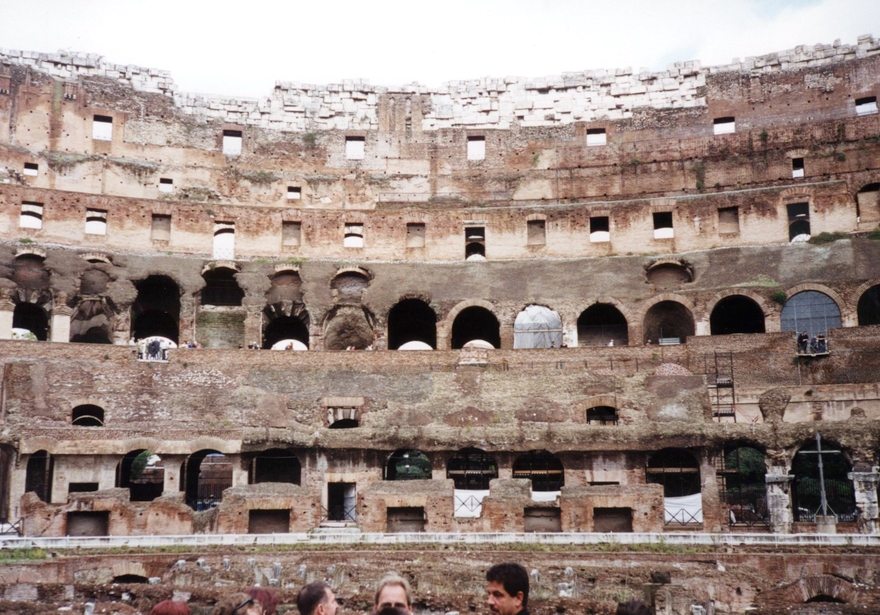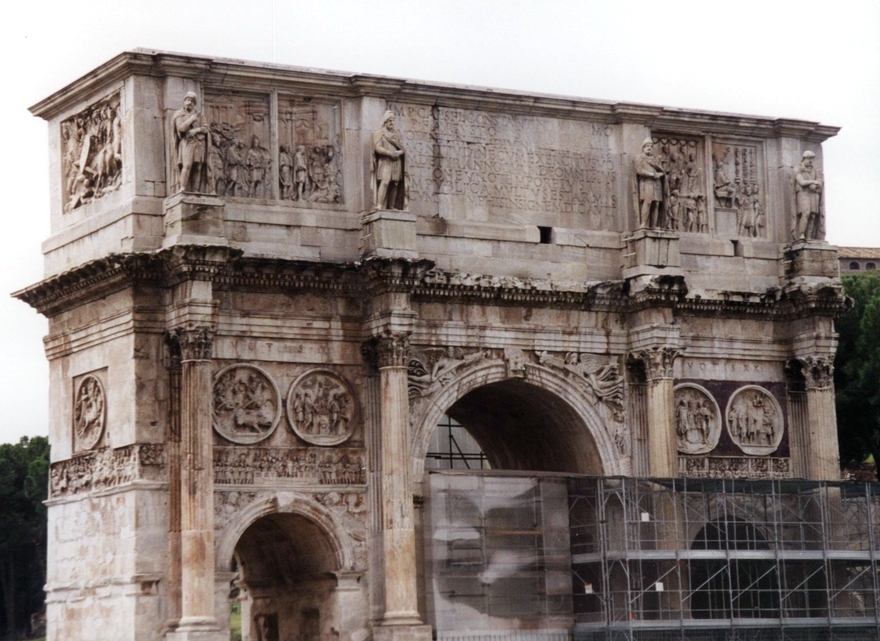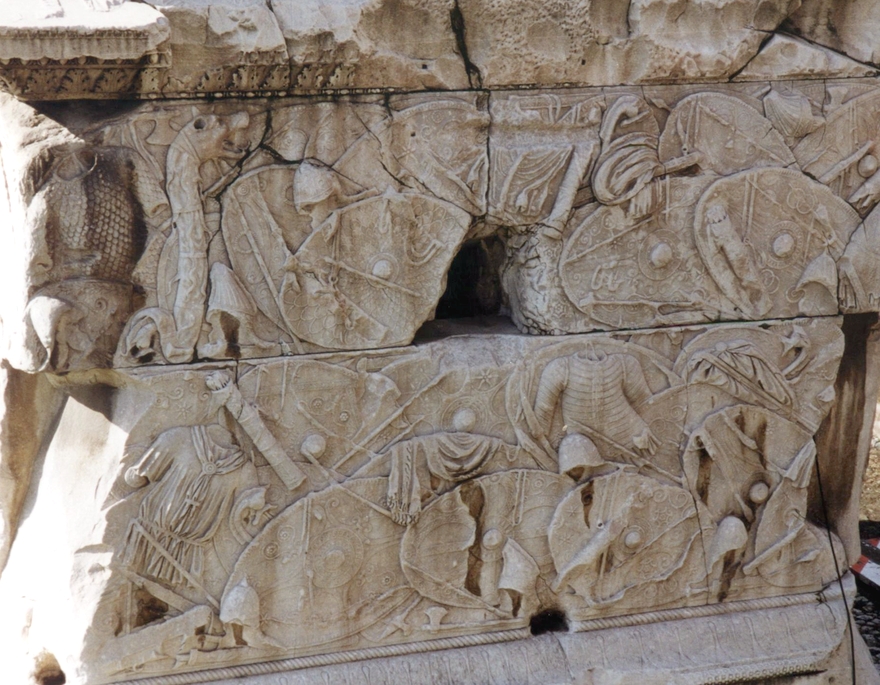
The Trevi Fountain, constructed in 19 b.c., uses no force other than
gravity to make the water flow.
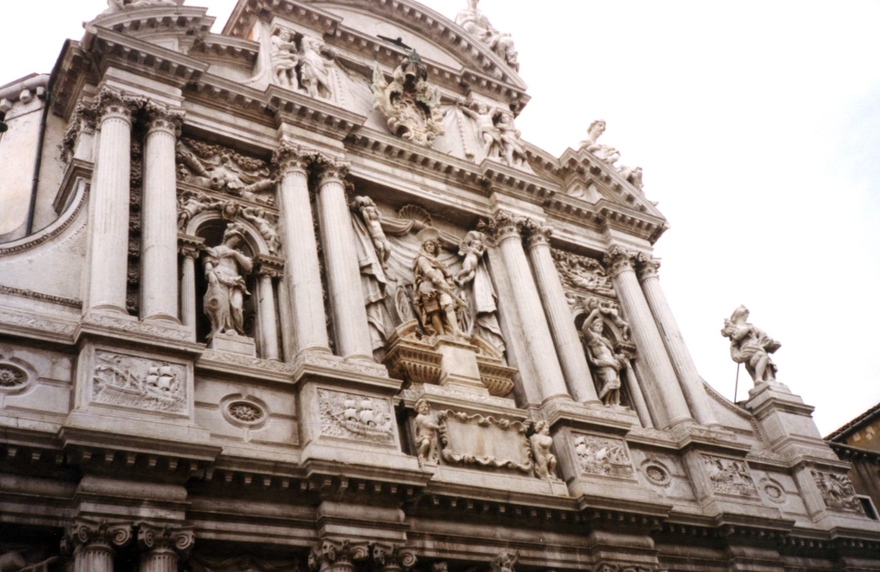
The top of some church
The Coliseum
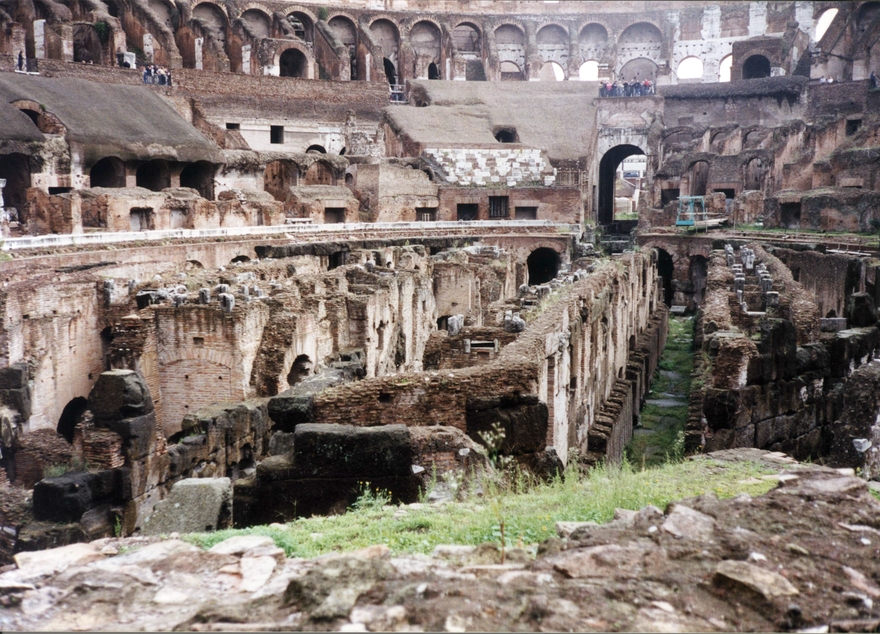
The Coliseum ‘floor’ (which was at the level of the white line around the left edge, on top of the structures below) was covered with wood and sand. Under the floor were cages (and lifts) for the beasts, cells for prisoners, armories, and so on. The Colosseum was dedicated in AD 80.
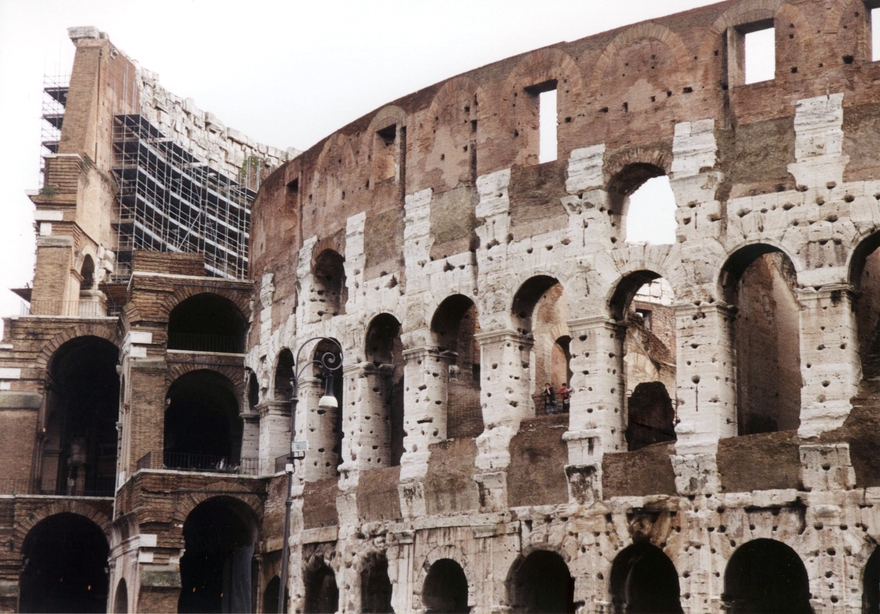
The outer walls of the Coliseum are made of travertine.The 80 arched entrances allowed easy access for the 55,000 spectators. The holes all over the walls were made in the Dark Ages, when the “recipe” for making iron was lost, and people scrabbled out around the iron “rebar” the Romans had used in building to melt down and re-use.
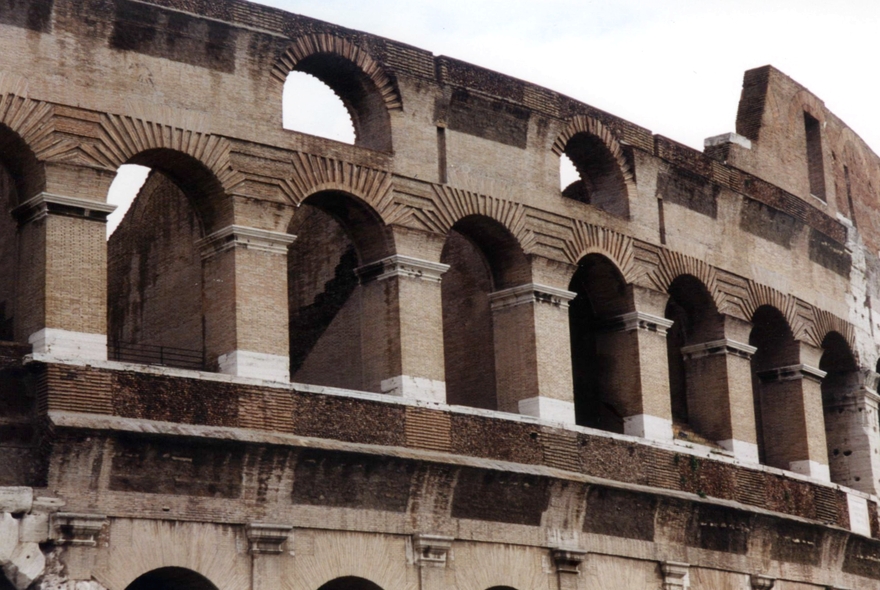
The outer wall. Notice that the Romans made very narrow, thin bricks.
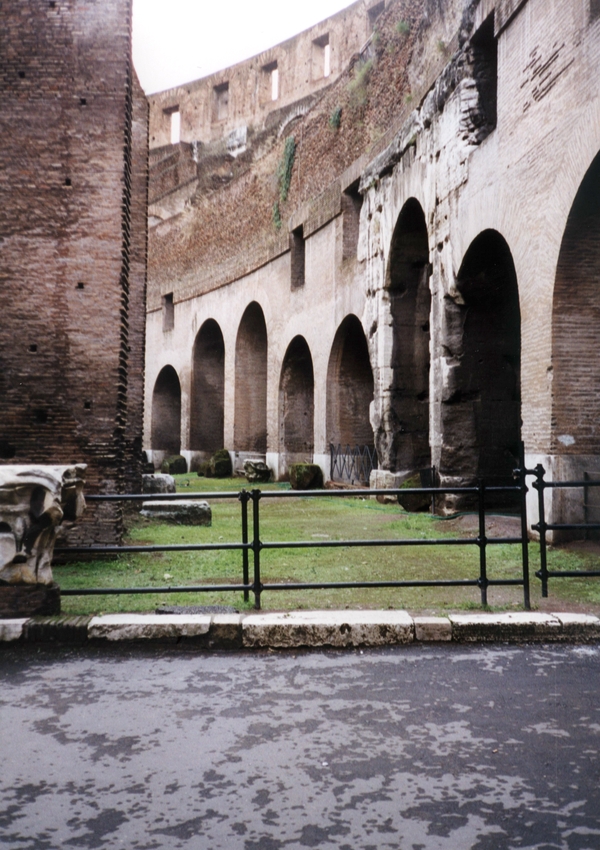
One of the spectator corridors to enter ther seating areas
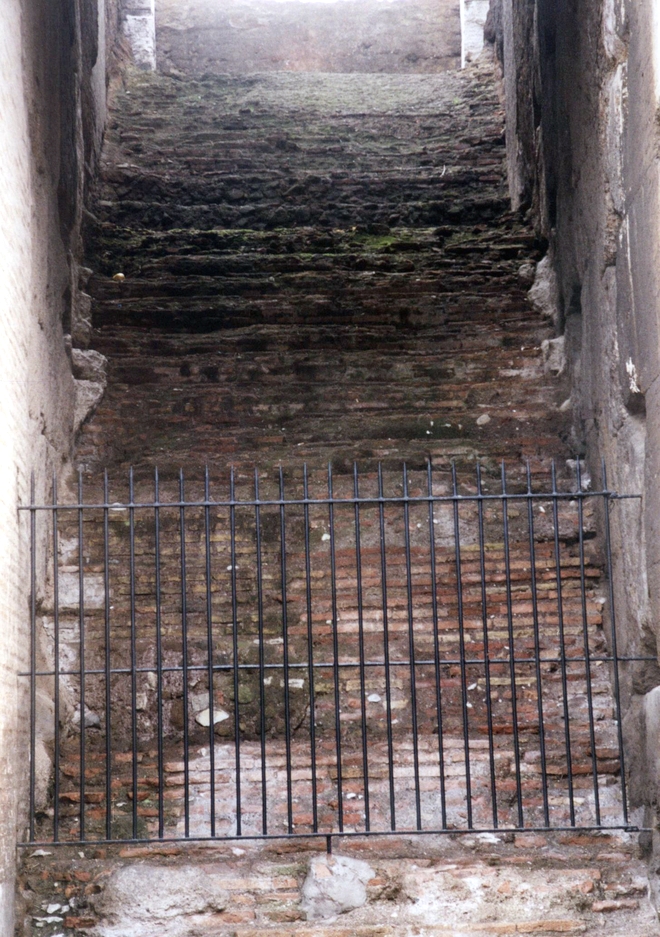
A staircase to one of the corridors
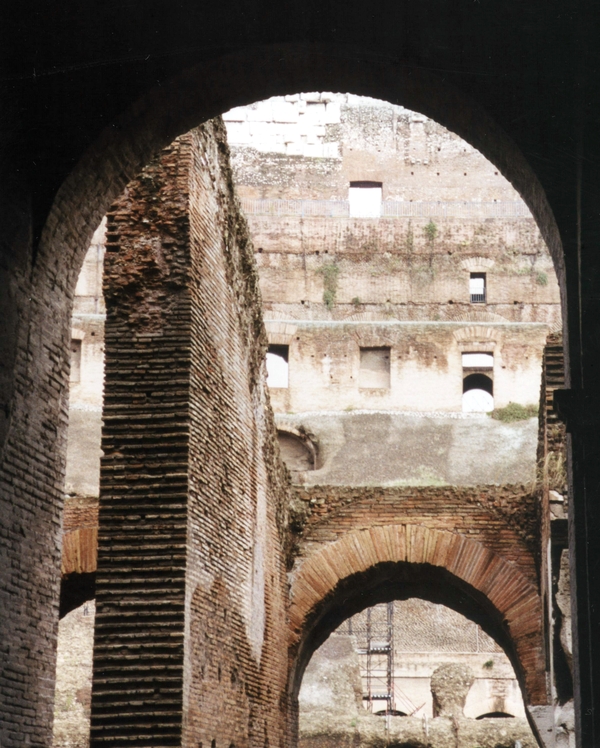
Looking up from under the floor level
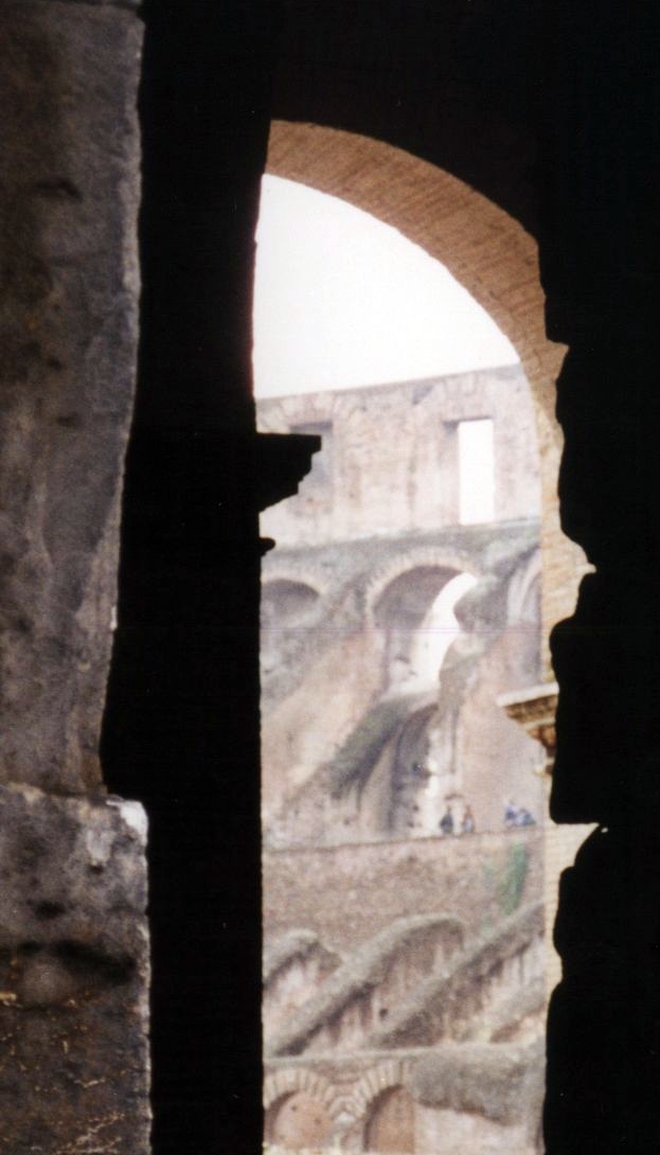
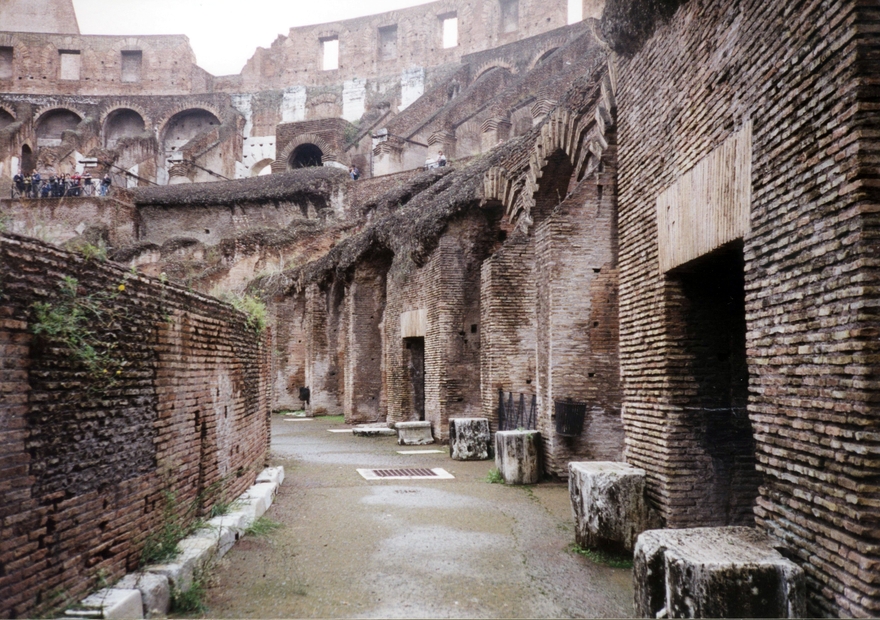
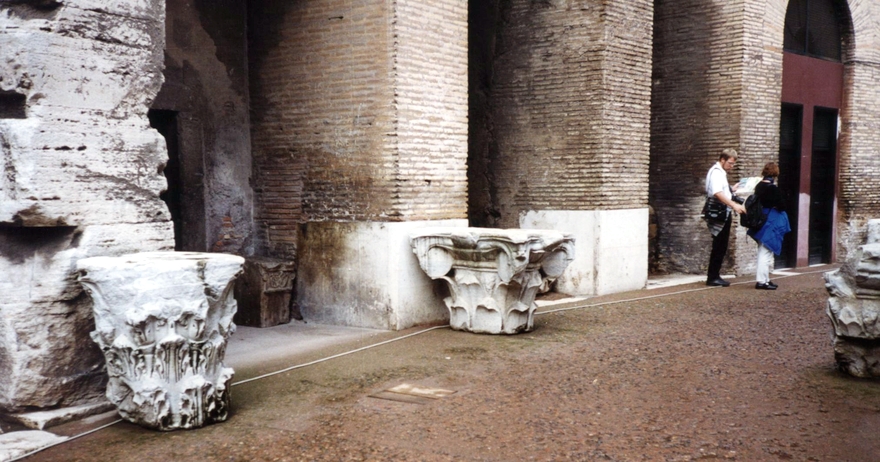
Hadrian’s Arch
Downtown Rome
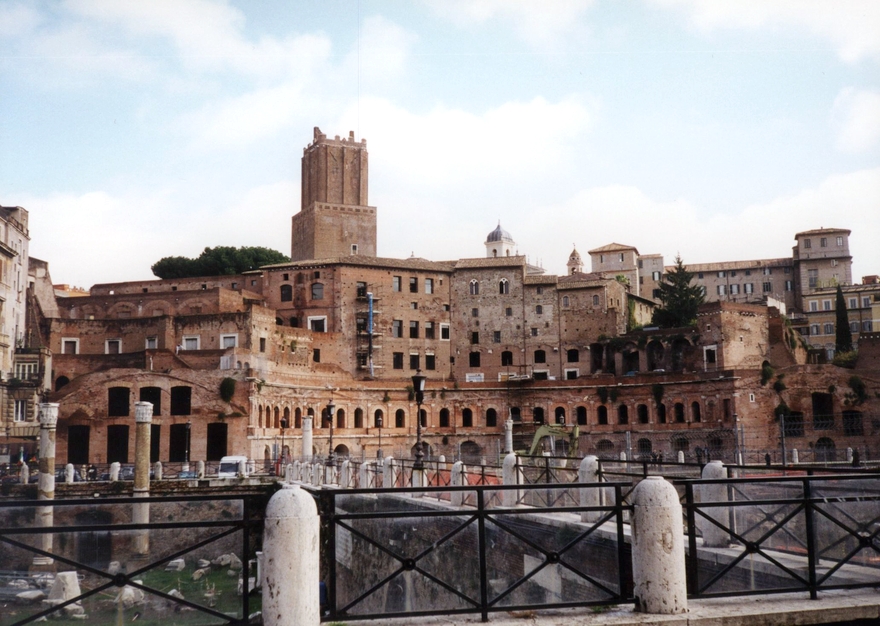
The marketplace
Trajan’s Column
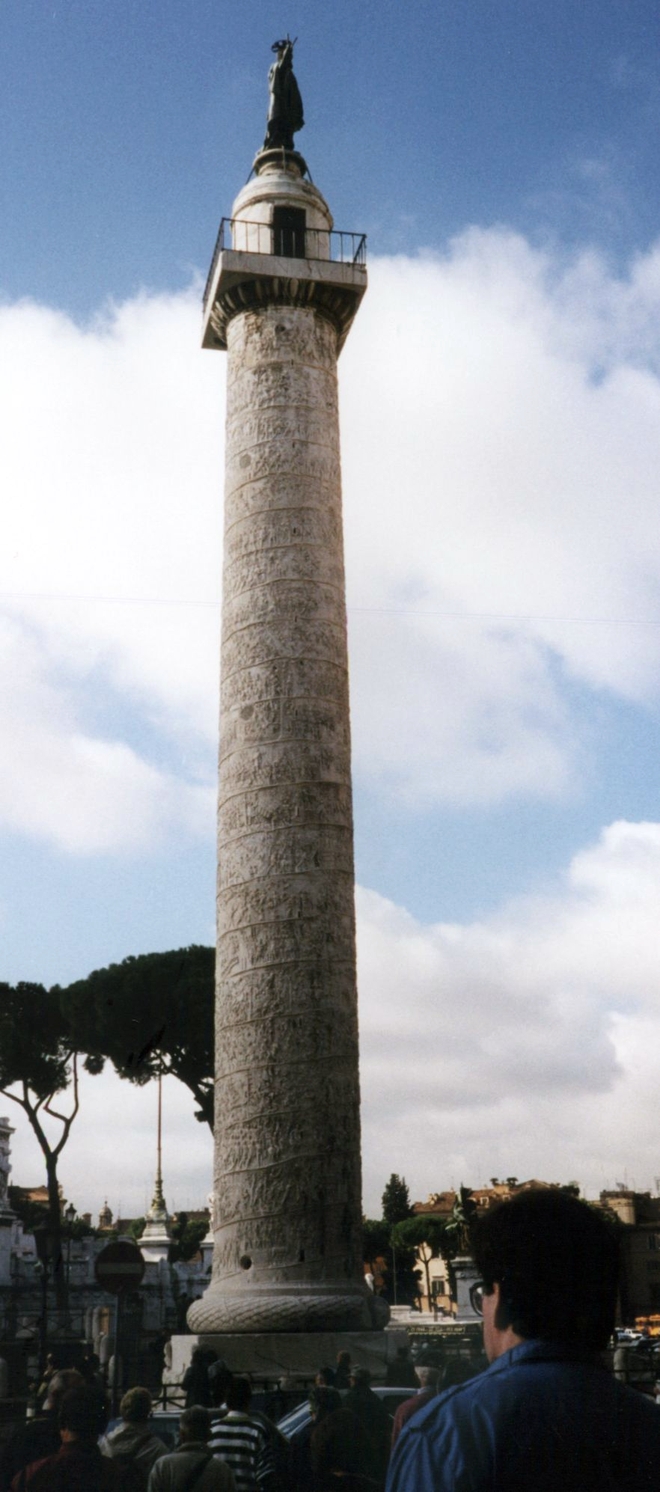
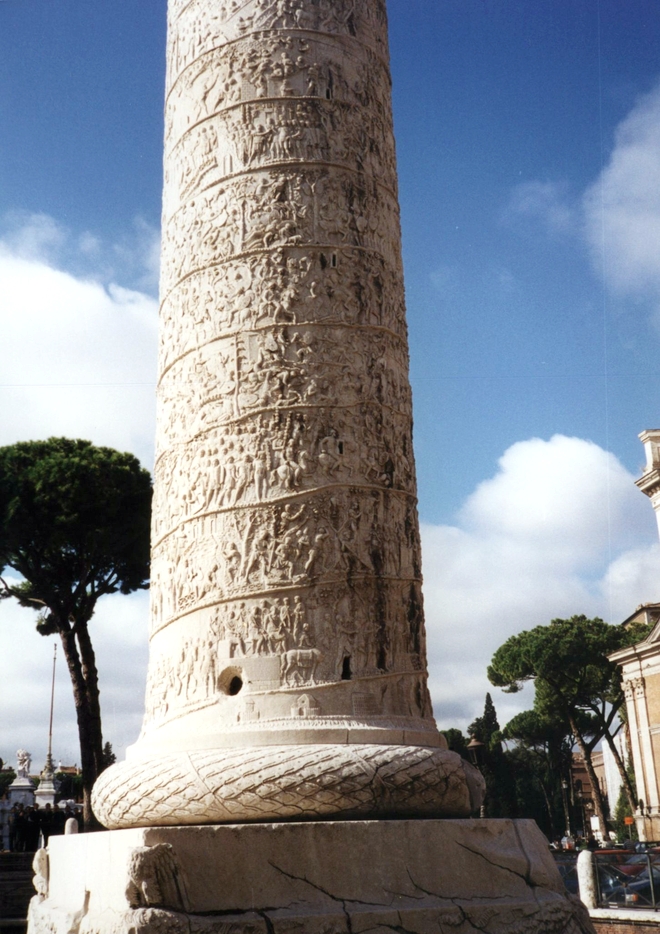
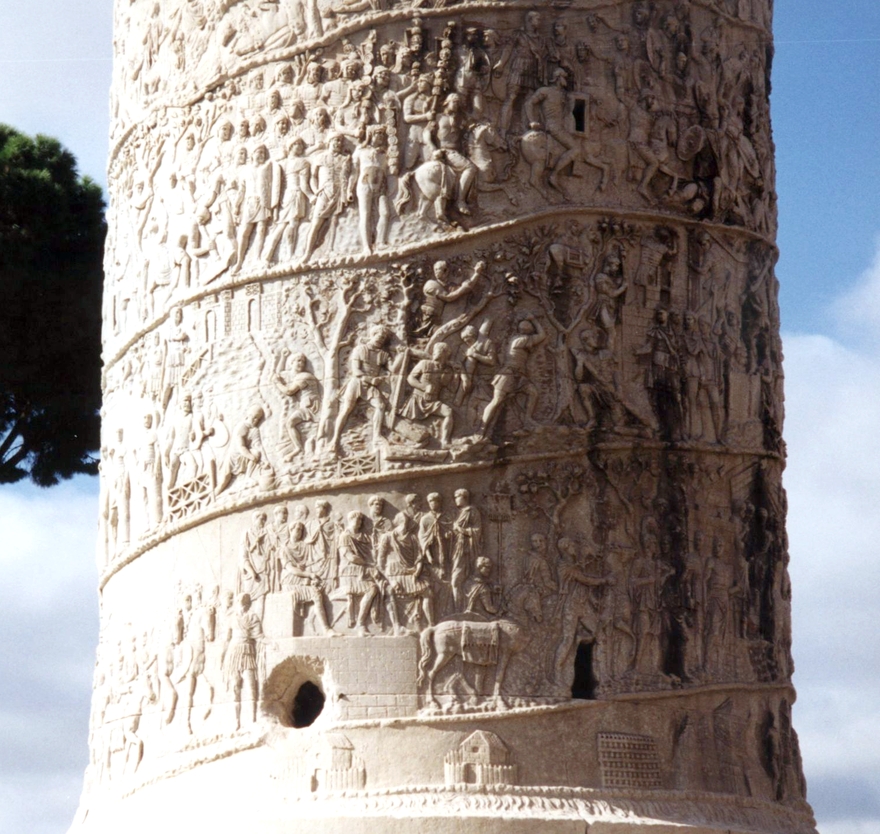 Trajan’s Column (Colonna Traiana) is a triumphal column commemorating
Trajan’s Column (Colonna Traiana) is a triumphal column commemorating Emperor Trajan’s victory in the Dacian Wars.

